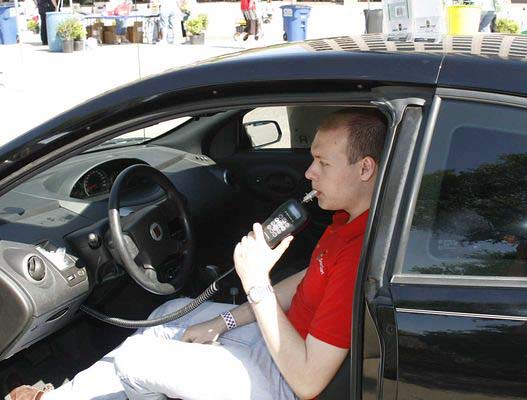
by Carson Benowitz-Fredericks, MSPH
Research Director, Alcohol Justice
Will your car take your keys away? Buried in the Biden administration’s wide-reaching infrastructure and social safety net bill, a small provision calls upon the National Highway Trafffic Safety Administration (NHTSA) to look into methods for cars to automatically curb dangerous driving. It does not specify what technologies will be employed, but does call for “passive monitoring” of driver performance to, presumably, safely cease operation of the car in circumstances where the driver may not be capable of driving. Once a technology or methodology is identified, manufacturers would have 24 months to begin installing it in all cars.
It is an ambitious call for safer roads. But is it the answer to preventing deaths and injuries from drivers who have been drinking?
It very likely would help. Ignition interlock devices, which detect blood alcohol content (BAC) in a driver’s breath and prevent the car from starting if a driver has been drinking, are commonly employed DUI prevention devices. But they are almost always only installed when mandated by court order, and even then are often waived because of high cost. Moreover, they require regular recalibration to operate effectively. A passive system would not check for BAC, instead presumably matching driver reactions or behaviors to those displayed by the typical dangerously intoxicated driver. If reliable, the Insurance Institute for Highway Safety estimates passive monitoring would save 9,000 lives a year.
The problem is, it may be beatable. Delayed onset of alcohol, learned operation or behavior, or extra concentration by the driver may in fact steer the vehicle accurately until it is, for instance, on the freeway. At that point, suddenly interrupting the operation of the car may be dangerous in and of itself. Moreover, these devices would only be in new cars. The same economic factors that make ignition interlocks unfeasible for many would create a period of a decade or more before onboard incapacitated driving controls are in the majority of the cars most people can afford.
More broadly, to assume that onboard algorithms are, themselves, sufficient or optimal to ensure safe drivers assumes that intoxicated drivers are isolated problems. People who drink dangerously then get behind the wheel are going to specific places to drink. They are drinking products made by specific companies, who benefit economically. And they are driving because it seems like the best way to get to the places where they drink.
Time and time again, Alcohol Justice has gone into hearings in Sacramento and listened to legislators extoll the benefits of selling more alcohol whilie minimizing its consequences. “Alcohol sales are an economic boon, alcohol is fun, any mention that of the harms it cause are just empty moralizing, there’s nothing we can do about drunk driving anyway.” The automated DUI prevention idea plays into this same bloodless rhetoric–alcohol-involved wrecks are just the individual’s fault. If we can fix people, then alcohol will not have any more harms. It plays hand-in-hand with the inadequate or deliberately self-defeating “enjoy responsibly” campaigns favored by Big Alcohol. Which in turn allows them, and their water-carriers in government, to dump any responsibility for alcohol harm on the people harmed.
This is not to say we should reject built-in protections against driving while intoxicated. It is to say we need to get louder still–it is time for Big Alcohol to own up to the deaths and injuries it causes. It is time for legislators to understand that their constituents suffer costs not paid for by bar receipts. It is time to embrace public transit, reject endless cycles of alcohol tax cuts, advance policies that promote intentionality in drinking, and confront alcohol harm as a community. A person in a car watched over by a computer is alone. A person moving through a healthier and more humane world is part of something greater.
Image by VCU Capital News Service. Used under Creative Commons license.
